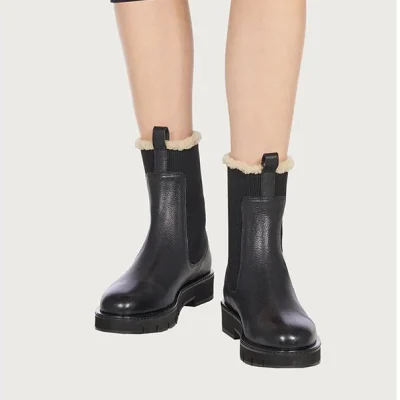The evolution of boot soles from leather to rubber represents significant advancements in footwear technology and materials science, driven by the need for durability, comfort, and functionality. Here’s a comprehensive look at this transformation:
Early Boot Soles: Leather
1. Leather Soles (Pre-19th Century):
- Material: Solely leather, often made from cowhide.
- Manufacturing: Hand-stitched and crafted by cobblers.
- Properties:
- Durability: Reasonably durable but prone to wear, especially in wet conditions.
- Comfort: Stiff initially but becomes more comfortable with wear as it molds to the foot.
- Traction: Limited traction, especially on wet or uneven surfaces.
- Usage: Common in both casual and formal footwear, as well as military and work boots.
Challenges:
- Water Absorption: Leather soles absorb water, leading to faster degradation and discomfort.
- Maintenance: Requires regular care and conditioning to prevent cracking and drying out.
- Traction: Poor grip, making them less suitable for outdoor and industrial use.
Transition to Rubber Soles: Industrial Revolution and Beyond
2. Introduction of Rubber Soles (Mid-19th Century):
- Innovation: The vulcanization process, developed by Charles Goodyear in 1839, transformed natural rubber into a more durable and elastic material.
- Material: Vulcanized rubber.
- Manufacturing: Molds and machines, allowing for mass production.
Properties:
- Durability: Significantly more durable than leather, especially in harsh conditions.
- Water Resistance: Rubber is naturally waterproof, solving the problem of water absorption.
- Traction: Improved grip and traction on various surfaces, including wet and slippery conditions.
- Shock Absorption: Better shock absorption properties, enhancing comfort and reducing foot fatigue.
Usage:
- Work Boots: Widely adopted in industrial and construction boots for their durability and safety features.
- Outdoor Boots: Ideal for hiking and outdoor activities due to enhanced traction and water resistance.
- Everyday Footwear: Gradually incorporated into casual and fashion footwear.
Modern Boot Soles: Advanced Materials and Technologies
3. Synthetic and Composite Soles (Late 20th Century – Present):
- Materials:
- Thermoplastic Polyurethane (TPU): Lightweight, flexible, and highly durable.
- Ethylene Vinyl Acetate (EVA): Excellent cushioning and shock absorption.
- Rubber Compounds: Blended with additives to enhance specific properties like grip, abrasion resistance, and flexibility.
- Manufacturing: Advanced molding techniques, including injection molding and 3D printing.
Properties:
- Customization: Ability to design soles for specific purposes, such as hiking, running, or industrial use.
- Performance: Enhanced performance features tailored to the needs of different activities and environments.
- Durability: Long-lasting materials that maintain their properties over time and use.
- Comfort: Superior cushioning and support, with designs that promote natural foot movement.
Innovations:
- Air and Gel Cushions: Incorporated into soles for additional comfort and shock absorption.
- Antimicrobial Properties: Materials treated to resist bacteria and odor.
- Eco-Friendly Materials: Development of sustainable and recyclable materials, addressing environmental concerns.
Key Milestones in the Evolution of Boot Soles:
- Vulcanization (1839): The pivotal invention that enabled the widespread use of rubber in footwear.
- Industrial Revolution: Mechanization of shoe production, making durable rubber-soled boots more accessible.
- 20th Century Innovations: Introduction of synthetic materials and advanced manufacturing techniques, leading to specialized and high-performance boot soles.
Conclusion
The evolution of boot soles from leather to rubber and advanced synthetic materials reflects a continuous quest for improved durability, comfort, and functionality. Modern boots benefit from a century and a half of innovation, making them well-suited for a variety of environments and uses, from rugged outdoor adventures to demanding industrial settings. This progression showcases the impact of material science and technology on everyday products and highlights the importance of innovation in enhancing human experiences.


















